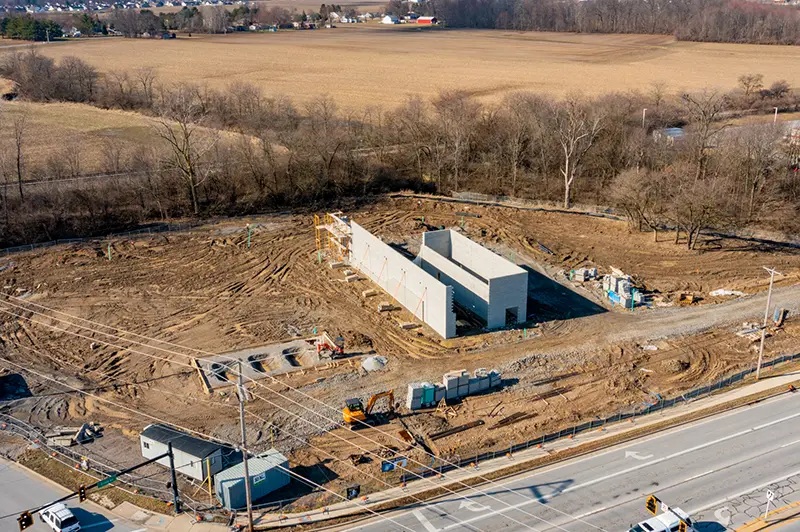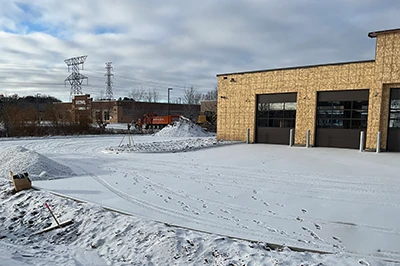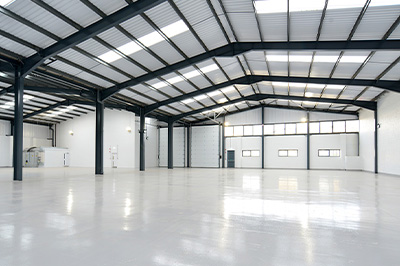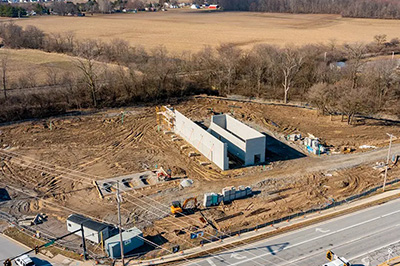Selecting Real Estate for Commercial Construction:
 Choosing the right site for a new commercial building is one of the most critical steps in the construction process. Whether you’re developing a car wash, gas station, service center, or large industrial facility, the land beneath your project will shape everything from your timeline and budget to your long-term success. Development companies often fail when selecting sites quickly based on price or emotions, before fully understanding the site and potential pitfalls. At Mammoth Construction, we help developers and business owners navigate this complex process by evaluating every detail before ground is ever broken. Below, Mammoth’s experts share factors to consider when selecting a site for your next commercial build.
Choosing the right site for a new commercial building is one of the most critical steps in the construction process. Whether you’re developing a car wash, gas station, service center, or large industrial facility, the land beneath your project will shape everything from your timeline and budget to your long-term success. Development companies often fail when selecting sites quickly based on price or emotions, before fully understanding the site and potential pitfalls. At Mammoth Construction, we help developers and business owners navigate this complex process by evaluating every detail before ground is ever broken. Below, Mammoth’s experts share factors to consider when selecting a site for your next commercial build.
Understand the Ground Beneath Your Feet
Every successful project starts with a solid foundation, literally. Before purchasing land, it is important to evaluate and understand what’s happening at the surface level and below.
First, start with the simplest question. Is the site the right size? Along with ensuring ample room for your prospective design, consider your business growth plans in the property size. Is there enough space to allow for future growth plans and additions before having to relocate completely. Next, make sure you understand the site at its surface and the potential impacts. Is the site flat, rocky, or sloped?
Lastly, know what is going on beneath your feet. Are there deep layers of unsuitable soil, peat, or clay that will require excavation or reinforcement? There could be a 20-foot mud bog underneath a few feet of topsoil, making it impossible to build the foundation required for construction. Conducting proper soil testing and geotechnical assessments will ensure you’re not investing in a site that will create costly foundation problems later. When possible, make your land purchase contingent on soil results and zoning approvals. It’s an upfront safeguard that can save hundreds of thousands in change orders and site remediation.
Evaluate Access to Utilities and Infrastructure
Utility availability is one of the most overlooked site selection elements, even though it can be one of the most financially impactful elements in the construction process. First, understand what your business needs and its equipment requirements. Before you move forward with a site, it is important to confirm that your chosen site has access to:
- Municipal water and wastewater systems with capacity for your operation. A restaurant or storefront requires different amounts of water than a carwash or facilities with heavy-duty fire suppression systems.
- Adequate power supply and gas infrastructure.
- Stormwater management systems or space for retention ponds. The more area of hard surface on your site, the more water runoff protection. Additionally, are there wetlands or protected sites to factor in nearby?
If these systems aren’t in place, developers must budget for costly upgrades or pay impact fees to the municipality. Even if the site works for today’s needs, consider future expansion. To avoid large future expenses, plan your utilities to scale with your business.
Confirm Zoning and Environmental Regulations
Zoning determines what you can (and can’t) build on your property. Buying land not zoned for commercial or industrial use can stall your project for months, or halt it completely. In addition, environmental regulations can significantly affect construction schedules. In Indiana, for example, tree-clearing restrictions protect endangered bat species during nesting season. Environmental site assessments will identify potential contamination or protected wetlands.
For sites with a history of industrial use, environmental due diligence is critical. Former gas stations, manufacturing facilities, or steel plants may have soil or groundwater contamination that requires remediation before you can build.
Don’t Overlook Drainage and Detention
Surprisingly, stormwater management can make or break a development budget if not identified early on. Commercial and industrial buildings often require on-site water detention, such as retention ponds or underground storage systems, to prevent runoff into nearby waterways. Because requirements vary by state, local environmental management agencies regulate detention system design and capacity, making it crucial to consult them on any requirements on a site. During the design phase, your construction partner should calculate drainage needs early to ensure compliance and prevent rework.
Factor in Access, Traffic, and DOT Regulations
Even the best location can fail if it’s difficult to reach. When selecting a site, evaluate ingress and egress, how customers, suppliers, and delivery trucks enter and exit your property. Not only is traffic an operational consideration, but concrete can quickly increase building costs, if a lot of work is needed to create efficient access.
Working with state and local Departments of Transportation (DOT) early can help you plan for:
- Turning lanes or deceleration lanes
- Safe truck routes for industrial operations
- Compliance with local traffic impact studies
For customer-facing businesses like car washes or gas stations, accessibility directly affects profitability. For industrial sites, poor road infrastructure can increase delivery costs and damage local relationships if heavy trucks wear down residential roads.
Account for Seasonal and Weather Impacts
 Weather can dramatically influence construction costs and timelines. Therefore, understanding the climate and seasonal weather, will allow for better planning and set important deadlines. Site work, concrete, and masonry are difficult and expensive to perform in freezing conditions, greatly increasing cost and timelines. By strategic planning for weather, construction managers ensure key milestones like grading, foundation work, and underground utilities are completed before winter sets in. Weather can impact construction not only in winter, but hurricanes and rainy seasons need to be considered depending on your site location as well. Landscaping may be the most common checklist item impacted by weather and delay a “fully” complete project. Although, if landscaping can’t be finished due to weather, most municipalities allow temporary occupancy until seasonal work resumes.
Weather can dramatically influence construction costs and timelines. Therefore, understanding the climate and seasonal weather, will allow for better planning and set important deadlines. Site work, concrete, and masonry are difficult and expensive to perform in freezing conditions, greatly increasing cost and timelines. By strategic planning for weather, construction managers ensure key milestones like grading, foundation work, and underground utilities are completed before winter sets in. Weather can impact construction not only in winter, but hurricanes and rainy seasons need to be considered depending on your site location as well. Landscaping may be the most common checklist item impacted by weather and delay a “fully” complete project. Although, if landscaping can’t be finished due to weather, most municipalities allow temporary occupancy until seasonal work resumes.
Redevelopment: Consider Pros and Cons
While repurposing an existing site can offer financial savings, it may also have hidden risks. This is why it is important to fully understand what was previously built and the condition of pre-existing infrastructure to know if it will positively or negatively affect your project. Sites with existing infrastructure, such as power or drainage, may reduce costs and speed up permitting. Even old concrete can be refinished or ground into a solid base, to reduce paving costs. However, older properties often come with environmental liabilities or restrictions based on prior use. A detailed site assessment can reveal whether redevelopment is a smart investment or a long-term burden.
Commercial Site Selection Summary
The right site isn’t just about location; it’s about longevity. Every successful commercial build starts with due diligence. Before selecting a commercial property we recommend scheduling the following assessments/studies to understand and mitigate the risks discussed above.
- Market Analysis
- Traffic Study
- Site Assessment
- Soil Borings
- Soil Testing
- Utility Mapping
- Construction Expert Site Walk / Inspection
These tests/studies are done by multiple companies, and they may only provide the report, without a detailed explanation of the potential impacts of the findings for your business. One of the construction services Mammoth Construction provides is the coordination of these studies, and educating our clients on the design, construction schedule, and project cost implications of the findings. By investing in comprehensive site selection early, you’ll minimize risks, prevent costly surprises, and position your project for long-term success.
Work with Experienced Construction Managers
Navigating the complexities of commercial site selection requires more than just local knowledge, it demands experience across markets and project types. While local contractors understand regional conditions, national construction managers like Mammoth Construction bring a wealth of nation-wide construction experience, ready to identify and handle the unexpected. Our team’s experience building across diverse climates, soil types, and regulatory environments helps clients avoid unseen risks and keep projects on time and on budget. We coordinate with engineers, architects, and testing agencies to translate technical data into actionable decisions, protecting your investment from the ground up.





